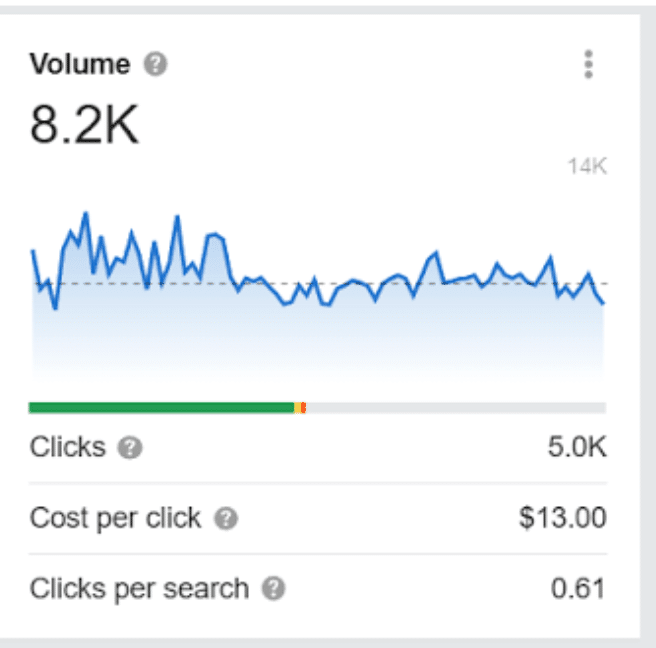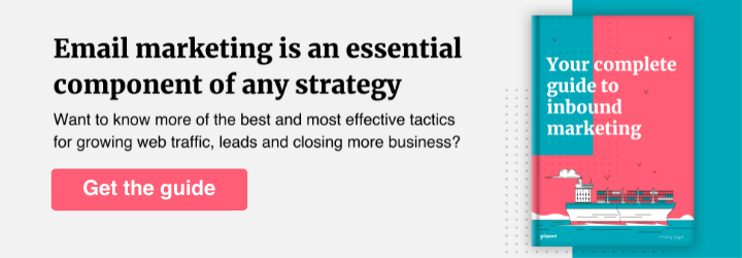What Are the Most Important Inbound Marketing Channels in 2023?

Here’s what we know:
- Organic search drives at least 53% of all website traffic compared to 27% for paid media.1
- 70% of marketers agree SEO creates more sales than PPC campaigns.2
- B2B companies generate 2X as much revenue from organic search than any other marketing channel.3
Although organic traffic isn’t the only part of a successful inbound marketing campaign, it does sit at the heart of success. Using the proper channels at the right time is how you grab traffic and follow up in ways that turn leads into paying customers. Here, we’re going to explain:
- Which inbound marketing channels your company needs to target in 2022.
- How to get the most value from each channel.
- Why you should create a marketing strategy that brings them all together.
Ready to get started?
1. Google and Search Engine Optimization (SEO)
First and foremost, inbound marketing is about bringing leads to you. The internet revolutionised this strategy, and when most of us talk about the internet, we mean Google. Search engine optimisation (SEO) is the strategy of optimising your organic visibility online for relevant search queries. By and large, this is your most important inbound channel in 2022.
Inbound marketing focuses first on SEO because of three things:
- It provides the best value with the least investment in your marketing budget.
- Every business can start SEO this week.
- Good SEO is going to increase your business value to your customers.

Let’s look at a few numbers to show you what SEO can achieve.
- For the keyword “inbound marketing,” the volume of searches per month is roughly 8.2K per month.
- This generates 5000 clicks on average every month.
- 26% – 32% of clicks go to the first result on Google.
- So, the top organic result for this keyword generates about 1,100 clicks per month.
- With a PPC cost of £9.49 per click, you can see running ads for this term could cost upwards of £10,000 to equal the same volume as the organic result.
Obviously, the costs and ROI will differ based on the targeted keywords. SEO may also take a much longer time to generate the results ads could create overnight.
Using SEO to your advantage
When looking to improve your website through SEO, let’s first define some basic things every company can do to launch its SEO inbound marketing efforts.
- Master keyword usage: Match your key pages to search terms (keywords) your target audience will use to find them. Tools like Google Search Console, Ahrefs, and SEMRush can help you identify these keywords. Frame your content marketing to use these keywords appropriately.
- Identify and satisfy search intent: People want something when they make an internet search. So, type your keywords into Google and analyse those results. Just by looking at the first page, you will be able to identify patterns — e.g. lots of product pages, lots of educational material, “how-to” blogs, or “best of lists”. You can’t just do exactly what everyone else is doing, but you do need to match the general theme; otherwise, you won’t be relevant to the audience making those search queries.
- Link your pages together: Internal links are essential for helping potential customers move around your website. However, they also help Google understand the content you are producing. So, create links from your pages to other pages on your site with related, valuable content to improve the authority of all of those pages. It’s like giving yourself backlinks — it’s not as impactful, but it’s a lot easier to control.
- Audit your technical SEO: Google and other search engines consider your website’s performance as a ranking signal. You need to optimise page speed, check for broken links and more to keep everything running smoothly and maximise the impact of your keyword research and great content.
Extra Resources to take a look at:
Even if all your business did the above four things, you would be well ahead of the businesses that haven’t started yet.
2. Your website
Your company’s website is a crucial part of your inbound marketing strategy. It should sit at the centre of your sales cycle. But how do you do this?
Successful websites do two things very well:
- Engage customers and visitors: Your website must engage, support, and delight your visitors. You need to speak to them to make sales, answer their queries, and build loyalty.
- Engage search engines and algorithms: Your website, along with your blog, is your main SEO vehicle. Not every page on your site needs to be optimised for search. However, you need to think about SEO in order to ensure that people see your pages in the first place.
How to get the most out of your website
Your website has key page categories you can optimise for success. Here are the pages you can use to target valuable keywords to drive higher traffic and sales.
- Home page: Your homepage needs to summarise the other parts of your website. It has three main goals: explain who you are, win searches for your brand name and direct customers to relevant parts of your website.
- Product and Category pages: Visitors should be able to see what you do, how you do it, and why they should buy from you. Focus on selling your benefits to the customer.
- SEO Landing pages: A landing page could be created as part of your SEO strategy to connect with people at the right stage of the sales funnel and convince them to do business with you.
- Blog post and Information pages: Adding blogs and information pages to your website does two things: quality content attracts customers and helps them understand your business better.
Each of these pages needs to be optimised to deliver on its goals. The whole website needs to work together to attract visitors and then drive conversions.
Extra Resources:
- 3 Stages of an Effective B2B Website Strategy
- The Basics of a High Conversion Landing Page
- How to Use Sales Methodologies to Improve Sales Outcomes
3. Email Marketing
You might be thinking… “Wait, isn’t email marketing outbound marketing?” In some contexts, it is. However, email campaigns are such an essential part of effectively following up with inbound leads that it has become a legitimate inbound marketing channel in their own right.
The key difference between inbound and outbound email marketing is your relationship to the target. If you follow up a request for more information, that’s inbound. If you are sending out spam, that’s outbound.
This means exchanging a resource for permission to contact leads for many businesses. A simple ebook or webinar can capture email addresses for further marketing. Anything you can create as a resource could also be a lead magnet for email nurtures.
How to get the most out of email marketing
The beginning of a great inbound marketing strategy for email is to create blog articles or other high-quality content that addresses customer pain points to attract leads. After this, you can start a process for nurturing leads into sales.
Here are some examples:
- Write helpful blog posts and give people a place to sign up for a newsletter. Once they sign up, your automation software sends them an email newsletter weekly or monthly.
- Create specific content, such as free tools or ebooks, to help potential buyers. Ask for an email address to send these pieces to them. Then, your CRM software can help you create an email funnel or sequence to turn leads into clients.
- Attract buyers by promising specific help through email. Automated reminders can help small businesses or sales teams reach out to customers in a structured way.
Let’s expand on the last one a little. Imagine you could offer your customers a set of tools to help them through a specific problem. You can offer your customers a subscription to a helpful series of emails to remind them to use your tools and walk them through the process.
Those emails are part of your inbound marketing strategy. Delighting customers by offering them useful information will help them and build brand loyalty that leads to sales.
Take things to the next level with automation. Your business can automate the process of responding to leads with targeted emails. Automation is the key to scaling your marketing process.
4. Social Media
Social media is so important to everything these days, even B2B sales. Considering that:
- 83% of B2B marketing professionals use social media advertising channels and rank them second in effectiveness behind search engine marketing.4
- 96% of B2B marketers use LinkedIn for content distribution, and 83% pay for ads on the platform.5
- Twitter, Facebook, and YouTube also offer options for advertising that can be tailored to your specific target audience.
How to get the most out of your social media channels
Winning on social networks requires a plan to attract social media followers. Engage with them through posts, and tie them into the buyer’s journey you have already established on your website.
Let’s cover all three steps quickly:
- Attract followers with genuine posts: Creating content that touches the right audience is an art form. However, your company can start by simply being honest. Promote yourself on social media with authentic social media posts from real people in your company will start building an audience.
- Engage followers through digital channels: Although LinkedIn remains the bedrock of B2B marketing, YouTube videos, your Facebook page, and even TikTok videos can help you engage customers. The key here is to follow up on likes and comments.
- Connect to your web content: Move your customers from social media to your website. To do this successfully, you can design special offers, landing pages, and other helpful content to draw customers to your website.
Social media can become complicated when company pages, leadership pages, employee pages, and engagement are happening across multiple platforms simultaneously. Take some time and write out a plan for how your company can manage its own social media profile. Include advice about how your employees can support the company through their engagement.
These are the basic steps of social media marketing. You can also master the three kinds of social media traffic to really succeed.
- Owned social media is all the content you can produce and own on your channels and pages.
- Earned traffic comes through shares and comments.
- Paid traffic is when you buy ads and content on someone else’s channel.
All three forms of traffic will help your business grow. Paid traffic might be the best option, though, unless you have the right personnel and budget for content creation.
Extra Resources:
- Why Managing Social Media Isn’t Working for Your Business
- How to Generate B2B Leads Using Social Media
5. Something else…
So, the first four channels on this list are the real “must-haves”. But there are several other channels that could be equally important. If you’re ambitious about this stuff, you should probably use one of them. It’s best to think about this in the context of your business, your audience, and what’s worked in the past. Here are some questions to ask yourself:
- Which social media channels are your customers using?
- What type of content will be most helpful for your customers?
- Do your customers want long-form content?
- Do they need help understanding how to use your product or service?
- How can you connect your social media channels to your revenue streams?
- Where do people in your industry look for answers to their questions?
There are dozens of ways to produce inbound marketing channels. The key is to match your content to your customers.
Here’s a simple example from the history of inbound marketing: John Deere and The Furrow. John Deere, an American farm equipment manufacturer, created its own magazine, The Furrow, in 1895. The Furrow wasn’t about marketing but about helping farmers. The upside for John Deere was how the magazine established them in the farming industry.
Your inbound marketing should accomplish the same goals. Establish your business as an authority in your industry, help your customers with their problems, and position your company and products as the solution..
These other channels could include:
- Podcasts
- Videos
- Industry journals
- Magazines
We can all see how the digital world is changing advertising and marketing. What doesn’t change is the way people operate as consumers. They want help with their problems, so you can use any avenue to get in front of your customers and position your company as the best solution.
The best inbound marketing focuses on the customer, not the channel
Inbound marketing works best when it is built around helping the customer. The channels you use are just ways to facilitate that connection. Tying all of your channels together creates a powerful marketing and lead generation machine for your business. If you’re struggling to make this work, we can help at Gripped. We can conduct a free growth audit on your current situation and help you build a plan for the future. Get in touch today and we can help you put that into action.
1 How Do Consumers Use Smartphones While In-Store Shopping? – Insider Intelligence Trends, Forecasts & Statistics
2 SEO vs. PPC: Which Channel Generates More Sales? | Databox Blog
3 Organic Search Improves Ability to Map to Consumer Intent:
4 BENCHMARKS, BUDGETS, AND TRENDS 11TH ANNUAL INSIGHTS FOR 2021
5 36 Essential social media marketing statistics to know for 2021
Reach Your Revenue Goals. Grow MRR with Gripped.
Discover how Gripped can help drive more trial sign-ups, secure quality demos with decision makers and maximise your marketing budget.
Here's what you'll get:
- Helpful advice and guidance
- No sales pitches or nonsense
- No obligations or commitments



Book your free digital marketing review
Other Articles you maybe interested in
B2B Demand Generation: Should You Adopt This Strategy in 2025?
Discover the essential tactics and strategies for B2B demand generation in this comprehensive guide.
A Guide to the Top 10 Marketing Agencies for B2B SaaS Companies: A Comprehensive Comparison Guide
The B2B SaaS landscape is booming—and it’s never been more challenging to break through the noise. Between new entrants, accelerating product cycles, and sky-high expectations from digitally savvy buyers, marketing your SaaS offering effectively requires a nuanced, tech-first approach. That’s where specialised marketing agencies for B2B SaaS companies come in. Unlike generalist agencies, these specialised…
The 10 Best Full Service Digital Marketing Agencies Updated for 2025 (UK List)
Navigating the digital marketing landscape has never been more complex—especially if you’re a B2B tech or SaaS company aiming to stand out in an increasingly crowded space. Between SEO, content marketing, paid campaigns, CRO, marketing automation, and social media engagement, the sheer volume of channels can be overwhelming. That’s where a full-service digital marketing agency…



